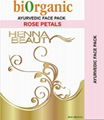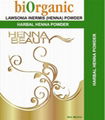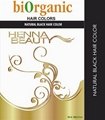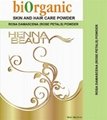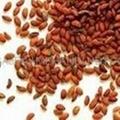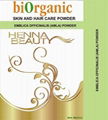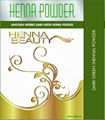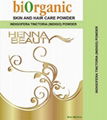Lawsoina inermis ( Henna ) Litrature
Product Description
HENNA ( LAWSONIA INERMIS ) NATURAL HERB FOR NATURAL BODY ART & HAIR COLOR.
Botanical Name : LAWSONIA INERMIS Family Name: LYTHRACEAE
Common Name: HENNA, AL-KHANNA, AL-HENNA, JAMAICA MIGNONETTE, MEHNDI, MENDEE, EGYPTIAN PRIVET, SMOOTH LAWSONIA
Part Used: FLOWERS, POWDERED LEAVES, FRUIT
Habitat : Scarcely in dry decidious forests, widely cultivated as a hedge plant.
Uses : The roots are bitter , refrigerant, depurative, diuretic, emmenagouge, abortifacient and trichogenous and is useful in burning sensation, leprosy skin diseases and amenorrhoea. It is used in pre mature graying of hair. Henna is widely used for drawing tatoos, arts and designs. Leaves are useful in wounds ulcers strangury cough, bronchitis, dysentery etc. The fruit is thought to have emmenagogue
About Henna
Henna, the plant, scientifically known as Lawsonia inermis has been around for at least 5,000 years. Its exact origin has been difficult to place. It has been claimed by historians that the Mongols brought Henna to India in the 12th century while others say it originated there. Then again they also say it originated in North Africa and the Middle East since ancient times. Archeologists have discovered that Henna was used on Egyptians prior to mummification when they started to find mummies with stained fingers and toes. Henna has only recently been introduced to the West. Many celebrities have made it popular and a noticed art form in America and Europe.
Henna has small, four-petaled flowers ranging from yellow to pink and its leaves produce a red dye. Twice a year the leaves are harvested, dried, and ground into a fine powder. This powder is used to dye hair red and for the ancient eastern art of mehndi. Henna contains hennotannic acid, a dye that bonds with the collagen in skin cells and keratin of fingernails and hair, leaving behind a red coloring.
Henna comes from a plant of the privet family. Henna has been known for centuries for its medicinal properties, as a cosmetic, its use in body art and its superb hair conditioning and coloring properties.
The Henna plant is found in many parts of the world including Australia, the Mediterranean, Africa and also in Southern United States. There are many varieties of the henna plant grown in different regions that result in different coloring properties and different colors of powder.
Pure natural henna powder can be bright to deep green, khaki or brown. Natural pure henna powders renders stains that are orange, red, burgundy, cinnamon, bittersweet chocolate brown, burgundy-black, black cherry and near black colors. BLACK stains are not produced by pure and natural henna powder. Learn more about "Black Henna" and what it can do to you.
Powder from the henna plant can be fine or coarse. Stains from henna powder made into paste are the result of the dye in the henna powder releasing when added to water or lemon juice and then applied to the skin or hair.
Product Image
Send Inquiry to this Member
Related Products of this Company
This member assumes full responsibility for the content of this listing. DIYTrade accepts no responsibility whatsoever in respect of such content.
To report fraudulent or illegal content, please
click here.
China Suppliers Quick Searching:
,
